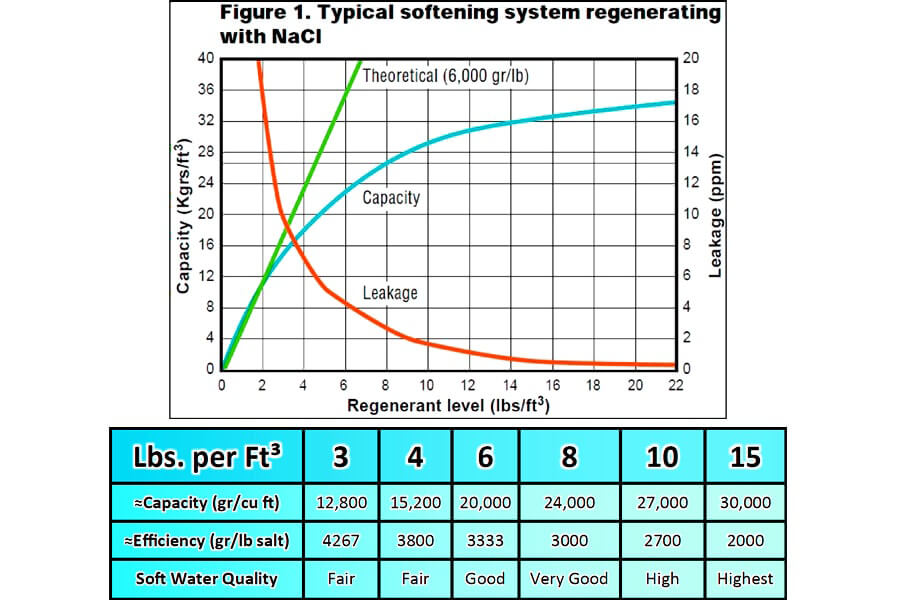Softener efficiency, capacity, and hardness leakage are all linked. A highly efficient softener will typically produce a lower quality of softened water. Lower quality softened water is adequate for most residential and commercial applications and is important for minimizing the negative environmental impact of softeners. Some applications may require very high quality softened water and efficiency will be sacrificed. The lower efficiency setting can be minimized by a simple staged softening system design. The first softener is set for the highest possible efficiency, a second polishing softener is regenerated infrequently with a high salt setting. The chart below shows typical softening system curves for these three important factors. For most applications, softeners should be set to use 6 pounds or less per cubic foot to ensure highly efficient operation and 10 pounds or more for the lowest hardness leakage.


Filtration Systems By Contaminants
3 Stage Water softener with Clack WS1 Control Valve
Commercial Reverse Osmosis
GRO 6-Stage-UV Reverse Osmosis Installation Kit with Pentair 50 GPD Membrane 1:1 and UV Filter
Commercial Filter Systems
Ev9275-03 Everpure Qc71 Triple-mcі Water Filtration System
Filtration Systems By Contaminants
3 Stage Water softener with Fleck 5810 XTR2 Upflow/Downflow Control Valve
Home & Office Water Coolers
Vertex PWC-8000 Premium Ice & Water Dispenser